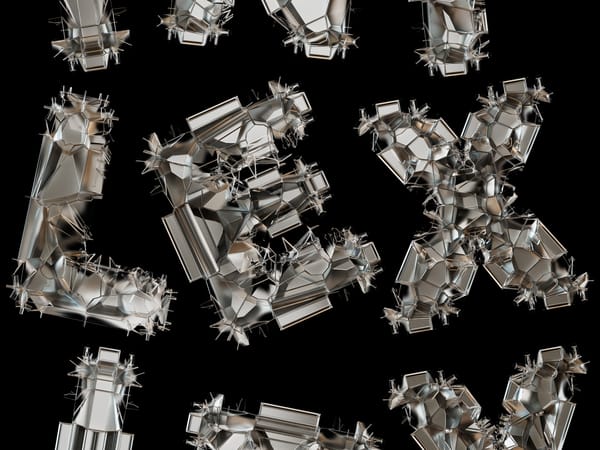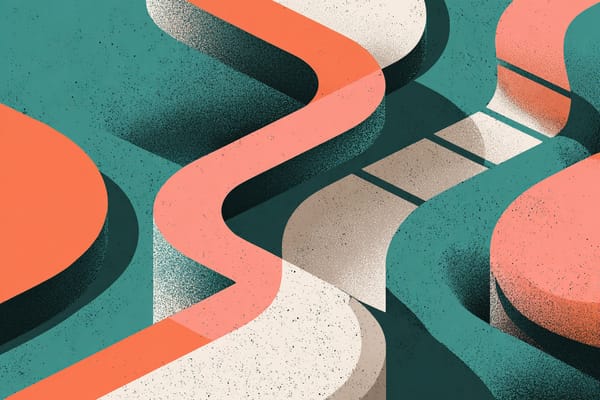You Can’t Sharpen a Blade While Juggling Knives
“While juggling looks impressive, it’s sharpening that makes your creative work powerful.”

There’s a phrase that perfectly captures the modern creative struggle:
You can’t sharpen a blade while juggling knives.
Doing everything at once doesn’t lead to mastery. It leaves you with blunted tools, half-baked ideas, and the feeling of running without getting anywhere. For freelancers, graphic designers, and creative professionals, this is an all-too-familiar trap: juggling projects, platforms, clients, and personal ambitions without ever pausing to refine the skills or systems that sustain them.
This post is about stepping away from the frantic performance of keeping everything in the air and instead choosing the slower, more deliberate act of sharpening the blade. Because while juggling looks impressive, it’s sharpening that makes the work powerful.
The Temptation of Juggling
Why do we juggle in the first place?
Because juggling looks like progress.
- Answering every email the moment it arrives feels productive.
- Jumping between three design projects in a single morning feels busy.
- Starting a new passion project before finishing the last one feels ambitious.
On the surface, it seems like momentum. But the hidden cost is this: none of those blades are sharper than when you picked them up.
For freelancers, the pressure is even heavier. You wear every hat—designer, marketer, accountant, negotiator, social media manager. Each hat becomes a knife in the air. The fear of dropping one keeps you in constant motion, even when you know you’re not making the kind of progress that actually matters.
Sharpening vs. Juggling
The distinction is simple but profound:
- Juggling keeps things going but rarely improves them. It’s reactive.
- Sharpening is investing time to hone your craft, your tools, or your systems. It’s proactive.
Sharpening doesn’t give you the quick thrill of ticking boxes. But over time, it multiplies effectiveness. A sharp blade cuts cleaner, faster, and with less effort. In creative work, that blade is your skillset, your ideas, your tools, and your focus.
Why We Avoid Sharpening
If sharpening is so powerful, why don’t we do it more?
- It feels slow. There’s no dopamine hit from practising strokes, refining a portfolio, or learning a new 3D workflow. Juggling gives instant stimulation.
- It feels selfish. Many freelancers feel guilty about improving skills instead of chasing clients. But sharpening isn’t indulgence—it’s investment.
- It feels risky. What if you sharpen the wrong thing and it doesn’t pay off? What if others keep juggling while you pause? Fear of missing out keeps you spinning plates.
But here’s the truth: every breakthrough in creative careers comes from sharpening, not juggling. The portfolio that lands a dream client isn’t rushed—it’s sharpened over years. The distinctive style that makes you stand out isn’t born of multitasking—it’s refined through deep focus.
Recognising the Juggler in You
Some signs you’re juggling instead of sharpening:
- You open your design software, bounce between three projects, and finish none.
- You refresh inboxes and feeds more than you create.
- You’re busy all week but can’t point to meaningful progress.
- You start new projects because the old ones feel stuck.
Juggling isn’t always bad. But if it becomes your default mode, you’re burning energy without building mastery.
The Sharpening Mindset
Sharpening values depth over speed, quality over quantity, and intention over performance. Here’s how to adopt it:
- Protect Time for Craft. Block out non-negotiable sharpening time—whether that’s typography practice, learning a rendering technique, or refining your pitch deck. Treat it like client work.
- Choose One Knife at a Time. Instead of juggling ten half-formed projects, commit to sharpening one. Finish the poster series. Polish the portfolio. Build depth.
- Focus on Quality Inputs. It’s not just about more reps. Get critique, study references, and learn from masters. Sharpening is deliberate practice.
- Slow Down to Speed Up. Sharpening feels slower, but it creates long-term acceleration. A polished workflow or skill saves you hours later.
Creative Examples
- The Juggler: Managing three client projects, a newsletter, and Instagram. Everything gets surface-level attention.
- The Sharpener: Pauses side projects, dedicates a week to experimental type, and applies it to client work. The result? Distinctive posters that attract new clients.
Or:
- The Juggler: Hours spent replying instantly to emails and tweaking minor details. Exhausted but oddly unproductive.
- The Sharpener: Refines proposal templates and pricing structure. Suddenly spends less time negotiating, more time designing.
Sharpening applies to craft, business systems, and personal routines. Anything that makes the blade of your work cleaner, sharper, and more effective counts.
Lessons From Other Crafts
- A chef doesn’t chop faster by juggling knives. They stop and sharpen the blade.
- A musician doesn’t improve by learning 12 songs halfway. They slow down and practise scales until muscle memory makes the complex look easy.
Creative work is no different. Mastery comes from honing, not juggling.
The Courage to Put Knives Down
Sharpening requires courage:
- Courage to put knives down, knowing you might disappoint someone.
- Courage to say no to a project so you can finish the current one.
- Courage to pause the social treadmill and trust that sharpening will serve you better than juggling for show.
The irony is that juggling feels safer—you stay busy and avoid the discomfort of stillness. But stillness is where sharpening happens. And stillness is where creative leaps are born.
Closing Thought
The creative world celebrates jugglers—the ones who can do it all, all at once. But jugglers tire quickly. Their knives grow dull. The performance dazzles, but it doesn’t cut.
Sharpeners may look slower at first, but their work slices through noise and competition. Their blades are precise, powerful, and lasting.
This week, put one knife down. Spend an hour sharpening—whether that’s practising a skill, improving a system, or refining your focus.
Because you can’t do both at the same time. And if you want work that matters, you’ll need to pick up the stone.



